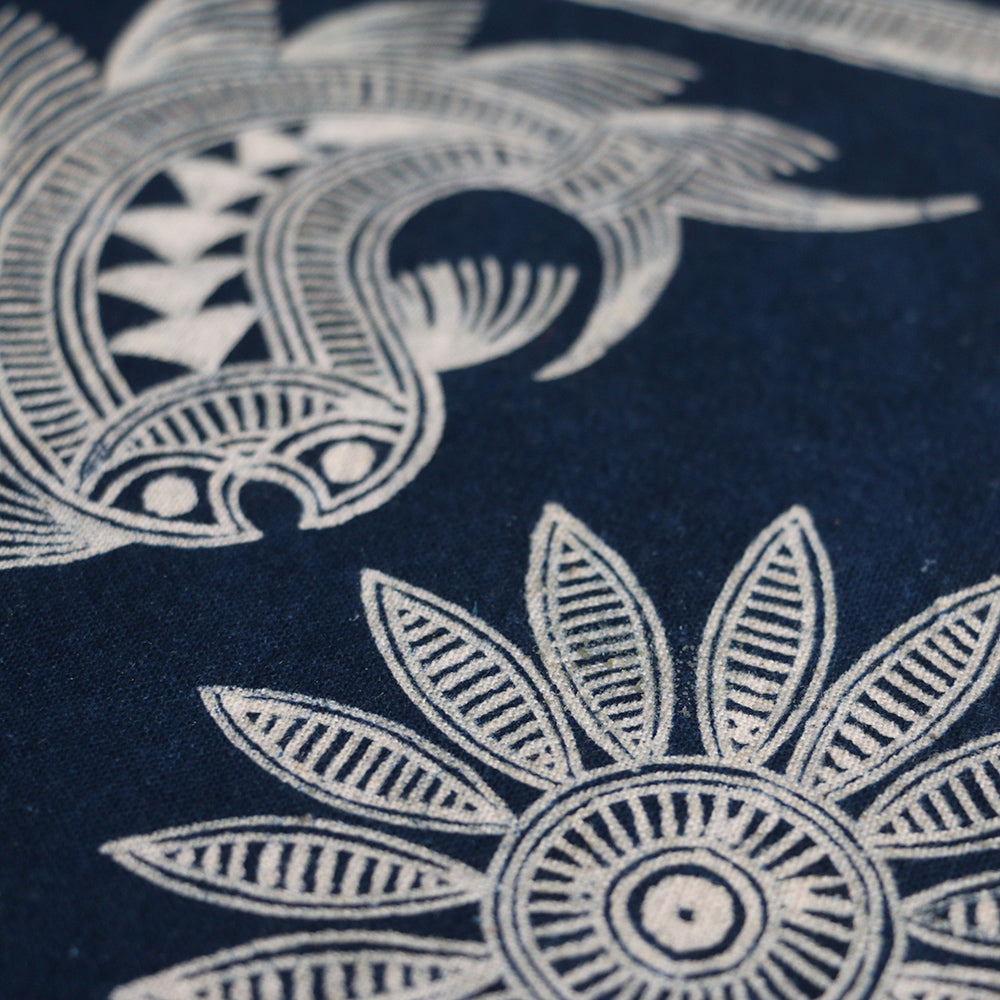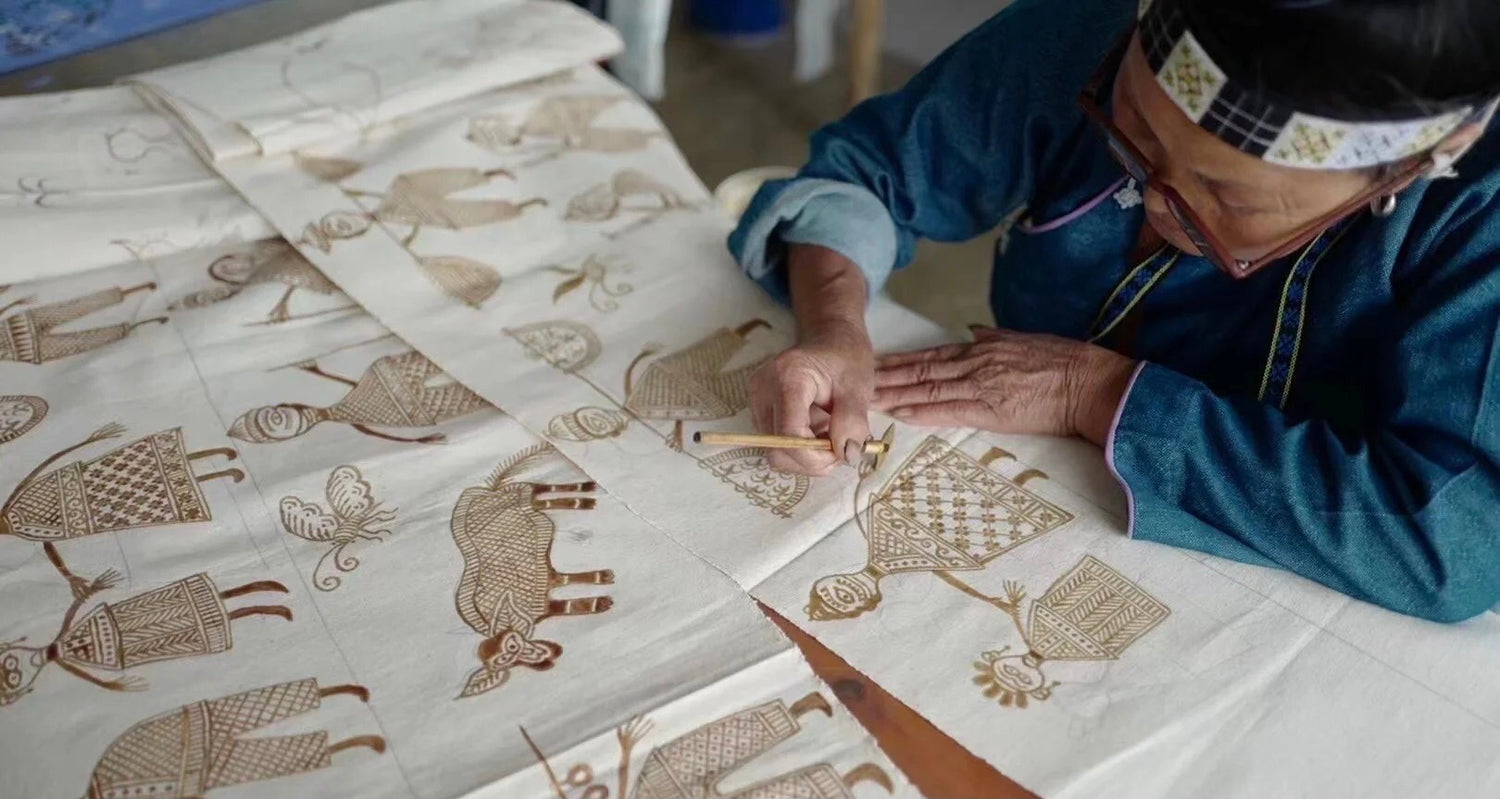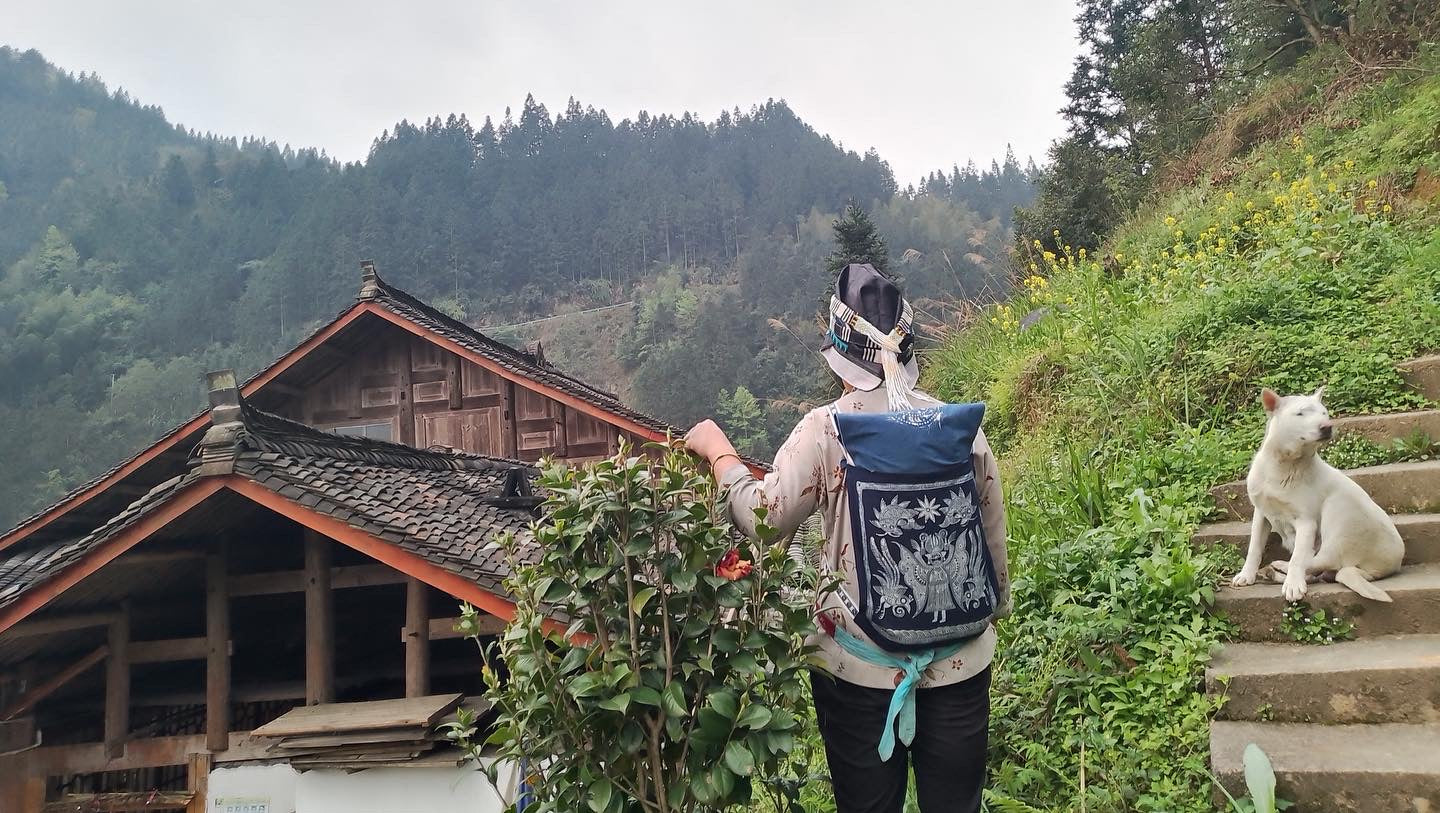Batik, an integral part of ancient culture of the Bouyi, Miao minority group in Guizhou province southwest China, has a history of more than 2,000 years. The batik textile tradition has been passed into Vietnam, Thailand, and Laos since the 18th and 19th centuries with the migrating of the minority groups especially for Miao group.
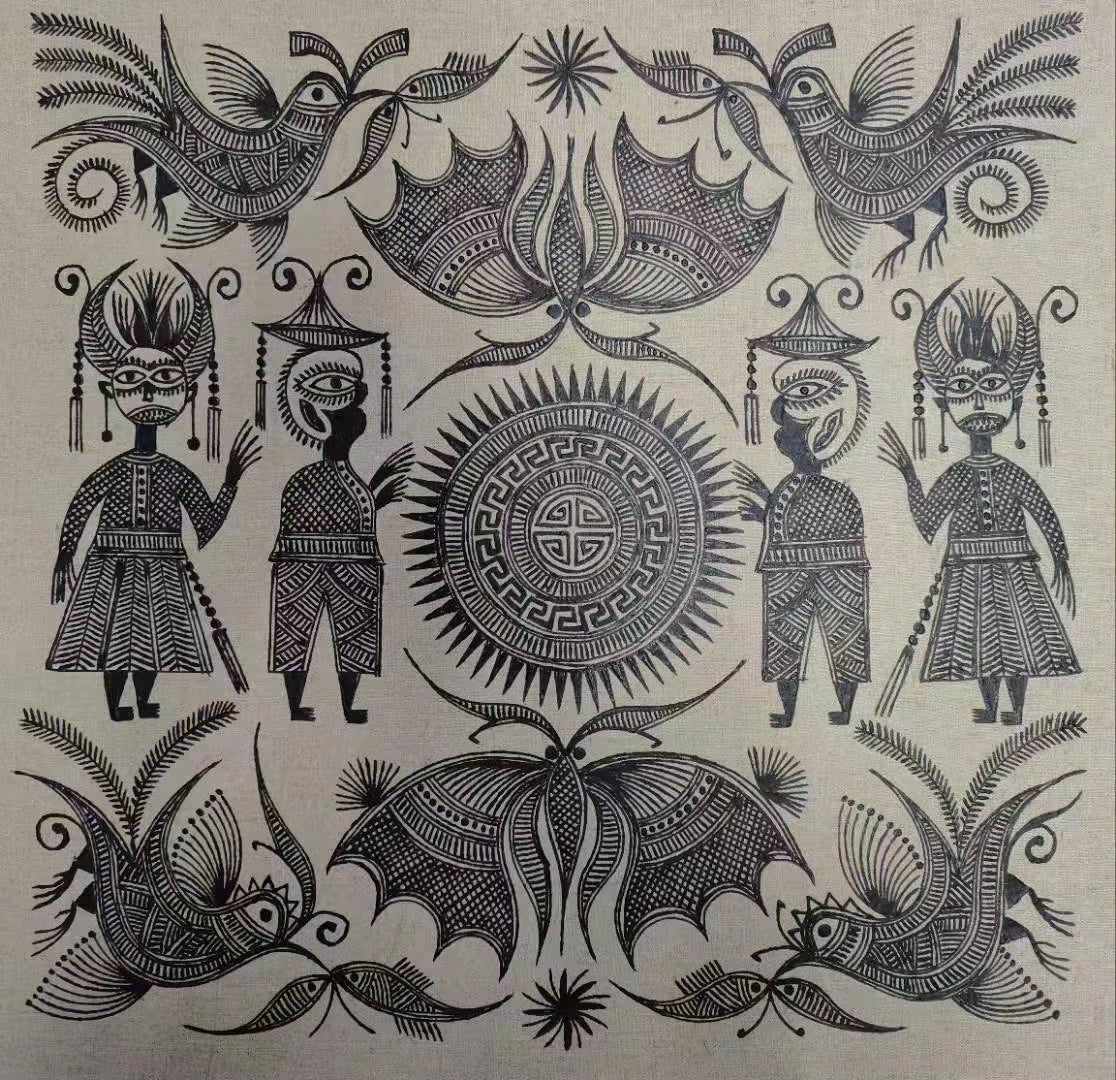
The folk artwork is famous for its elegant color, graceful patterns and rich cultural meanings.
Since the Miao people don’t have their own written language, they use those batik patterns as an essential visual language to tell their cultural, religious and historical story to the outside world.
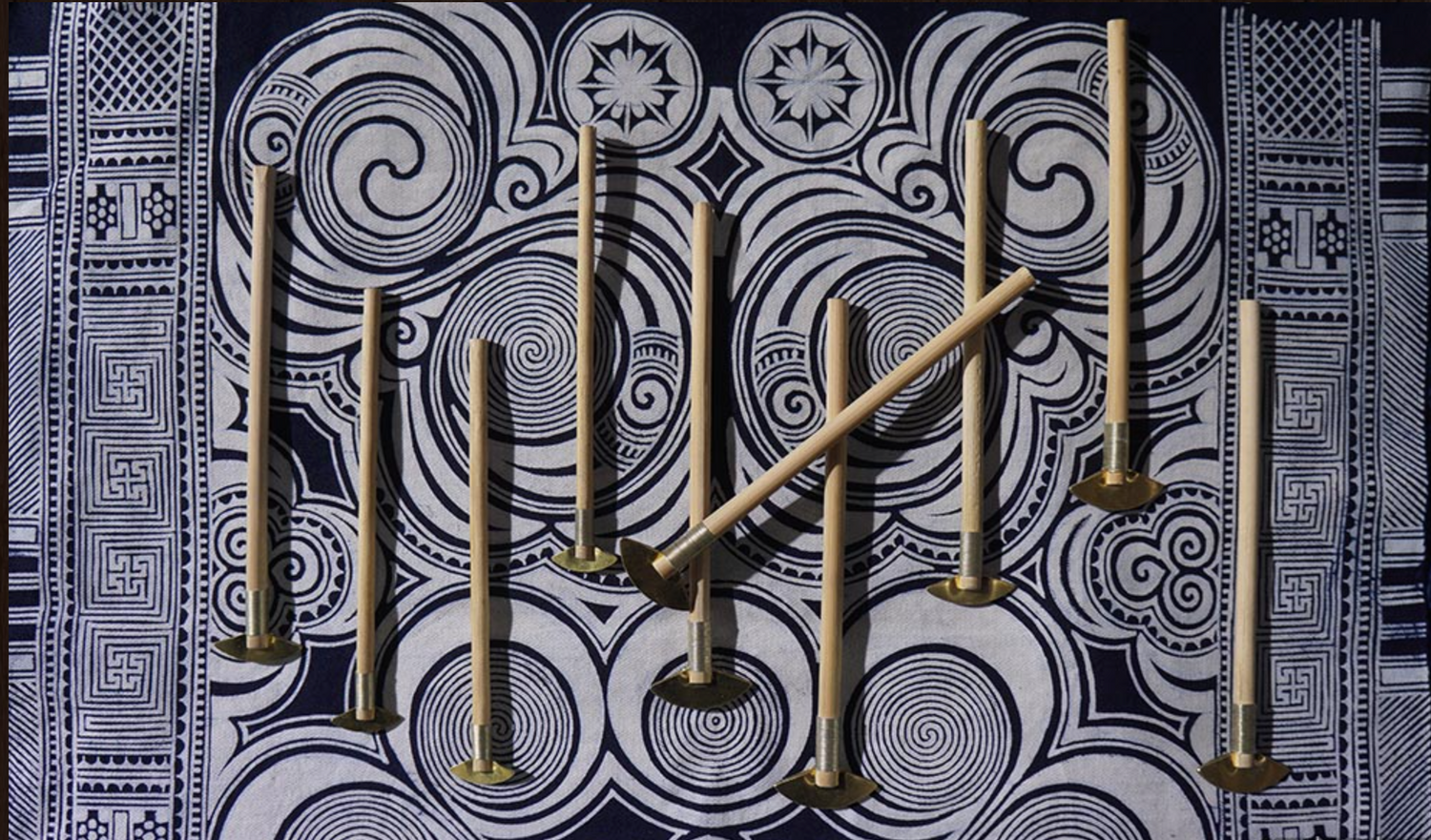
The distinctive style of Miao batik comes from the stylized use of lines and shapes combined with a diverse array of themes and techniques, and the creativity of the women who design them.
With innovation inspired by Miao folklore, they transform the abundance of plants and animals in nature into bold, stylized world of legends and fantasy.
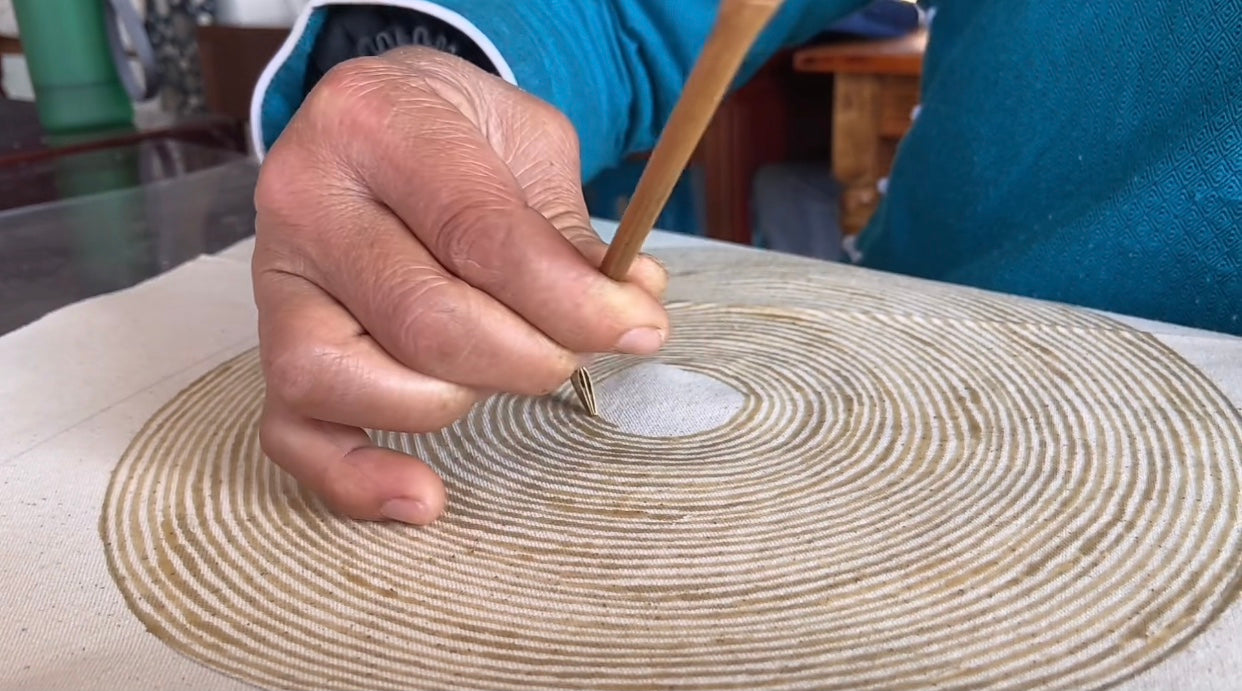
To create patterns or drawings on the white cloth, The Miao women picture the patterns in head and draw with freehand without using extra tools. They just fold the fabric in various ways, bundle it in whole or in parts, before dipping it in melted beeswax.
Batik tools
-
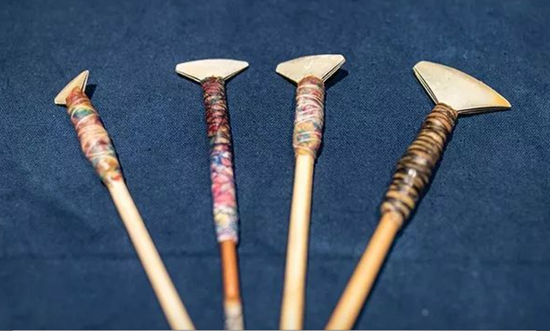
Batik Knife
-
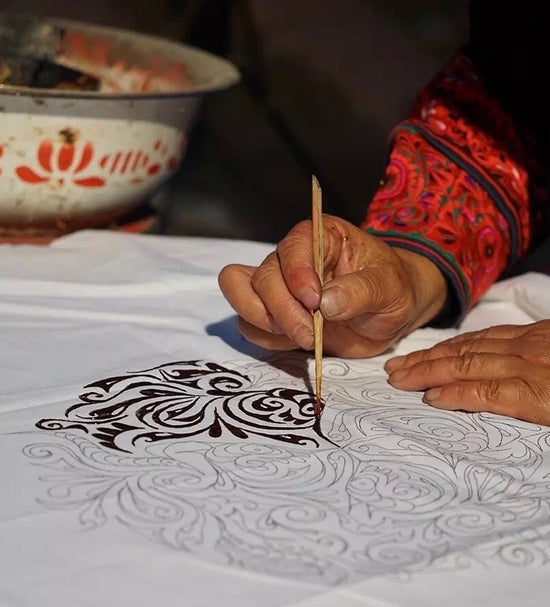
Bamboo Stick
-
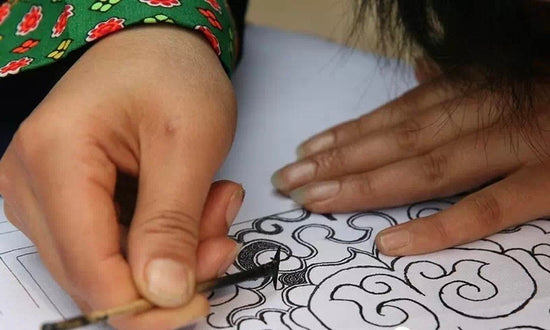
Batik Knife(Zhijin region)
-
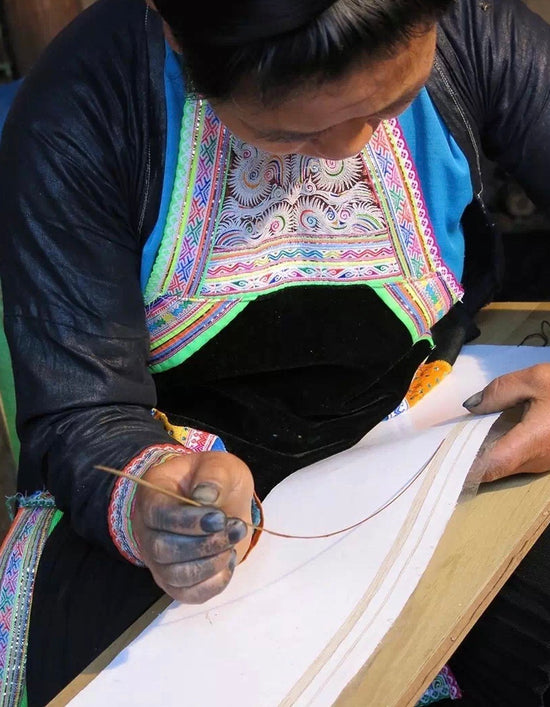
Bamboo Stick (Biasha region)
-
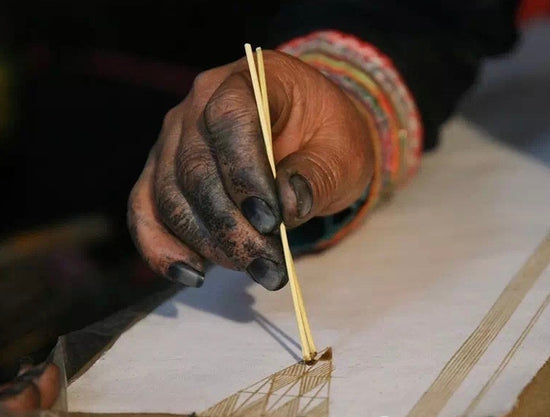
Rice Straw
-
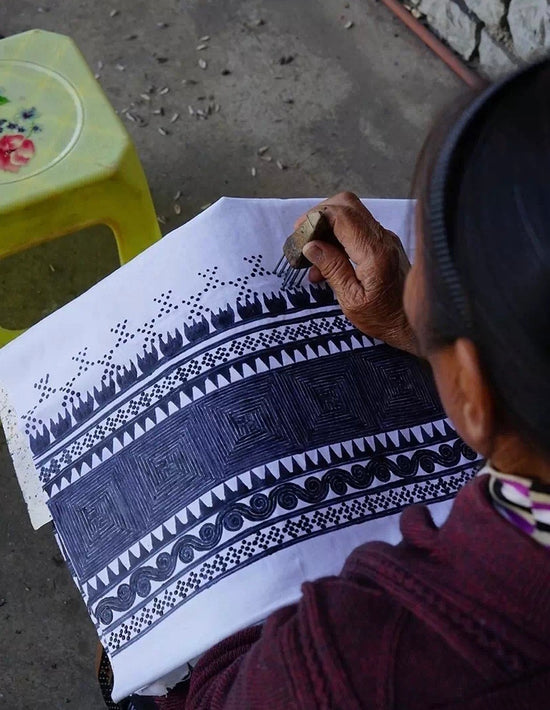
Knife for Dots(Bouyei)
-

Wax
-
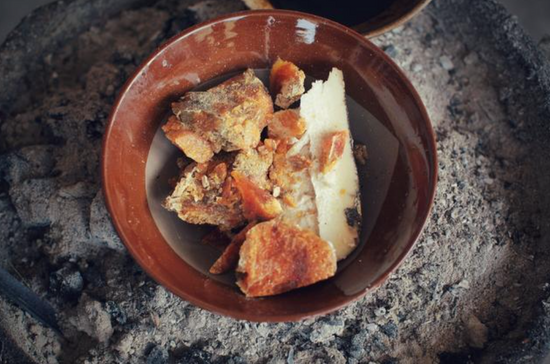
Liquidambar
Batik Process
-

Heating the Wax
-
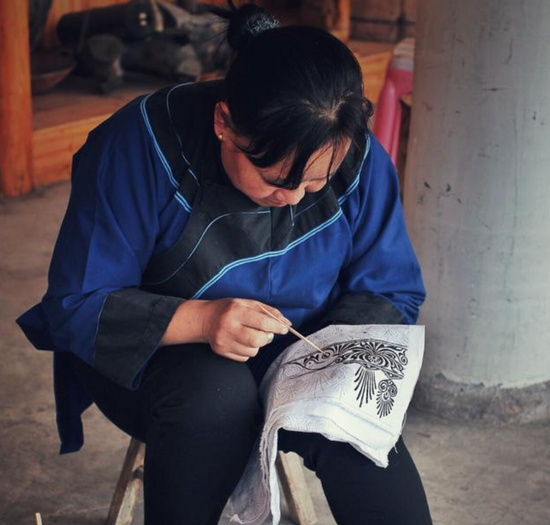
Drawing the wax pattern
-
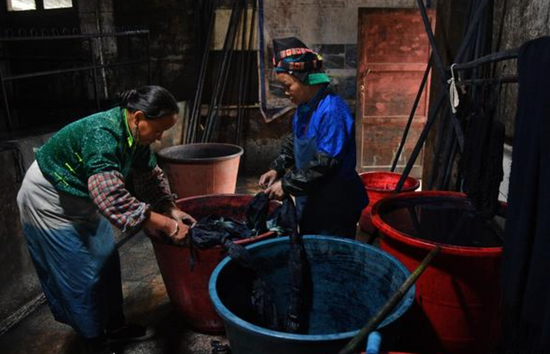
Dyeing
-
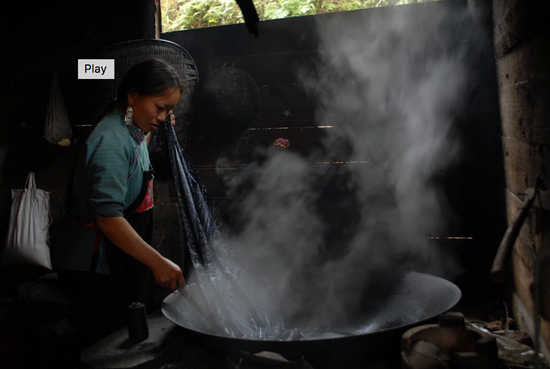
Boiling off the Wax
-
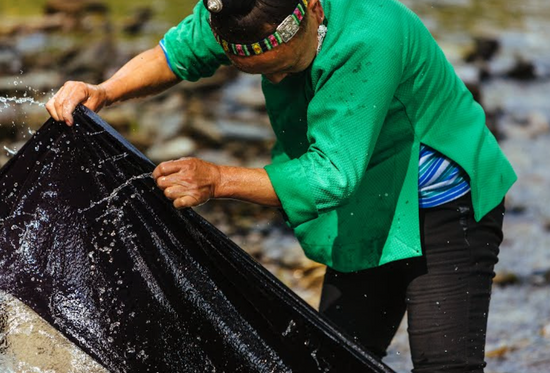
Resin in the water
-
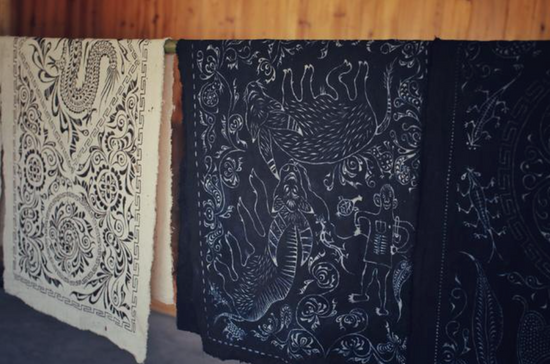
Line Dry
